Once you’ve had your fill of their gorgeous blooms, here are 6 Important Things to Do With Christmas Cactus in February!

People love these Christmas flowers and take great care to make them bloom on time. And those who never grew them before, buy a blooming specimen for their home!
But what happens once the flowering period is over? Should you treat them as perennials and care for them as best as possible, or grow them as annuals and let them die?
Absolutely not! Your Schlumbergera truncata can live for decades, and here are the 6 best things to do with it in February that will keep it healthy and thriving for a long, long time!
Things to Do With Christmas Cactus in February
1. Cut Back on the Watering
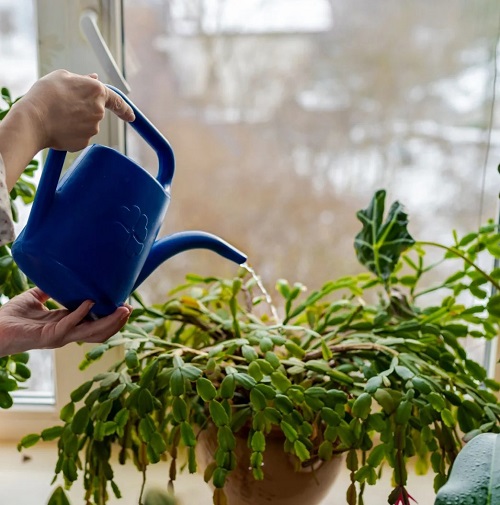
Let’s start with an easy one. During the blooming period, you kept the soil evenly moist because these plants need water to sustain their flowers and prevent bud drop.
Now that the flowers are gone, you should cut back on the watering a little. Christmas cacti are quite sensitive to overwatering and can easily get root rot if you’re not careful.
The general rule would be to let its soil dry out very much before watering when it’s not flowering, which typically means watering every week or two, depending on the growing conditions. Doing so will allow your plant the much-needed rest to recover and prepare for foliage growth.
2. Give it Plenty of Light
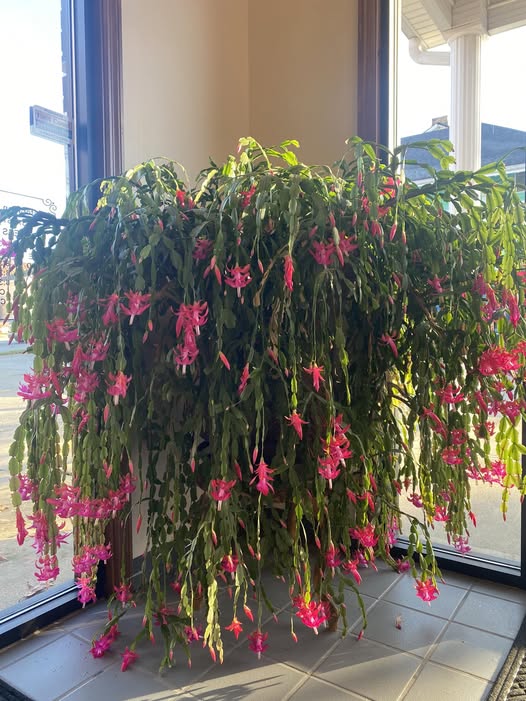
Creating the ideal environment is the most crucial part of getting Christmas cactus to bloom again and grow well. It needs lower temperatures and 12-14 hours of darkness for at least 4 weeks. But that should not be continued in February.
You should move your plant to a spot with bright, indirect sunlight. A south—or west-facing window with a sheer curtain is ideal. Here’s how much sun these plants need and how to choose a good location for them in February.
Pro Tip: You may come across sources that mention it needs soil temperatures between 70 and 80 F (21 and 26 C), but it’s not compulsory to maintain this exact range. Average room temperatures are usually sufficient. Just be sure there’s not a vast difference.
3. Prune It!
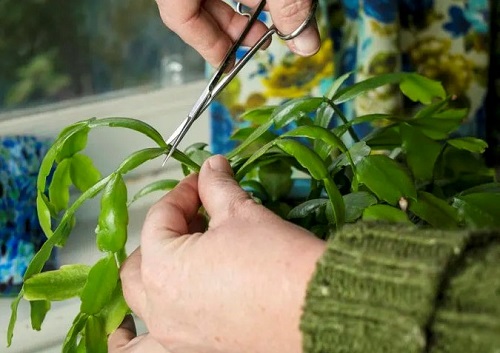
Christmas cacti typically finish blooming around January or February, so pruning after the blooms fade encourages the plant to focus on new growth.
Plus, it helps the plant branch out, leading to a fuller, more compact appearance. And, of course, more branches mean more potential for flowers in the next blooming season.
Before you go and grab your pruning shears, let us tell you–using your hands to twist off the leaf segments is better! Here’s how to do it properly and how much to prune.
4. Propagate Your Christmas Cactus
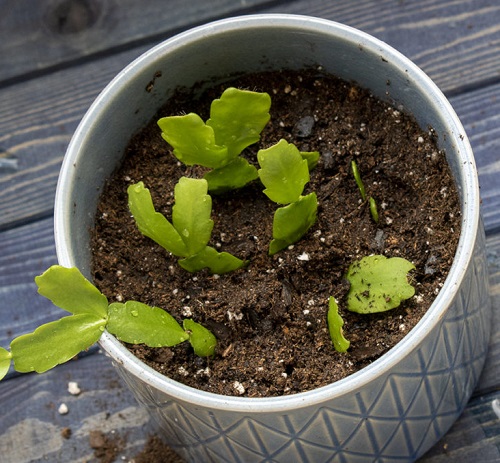
Well, never ever throw away cuttings that you just pruned off. Instead, after trimming your plant, use this opportunity to make more Christmas cactus babies. You can expand your collection or use them as gifts for family and friends.
Why do this in February? After your Christmas cactus finishes blooming, it shifts its energy from flower production to vegetative growth (growing new stems and segments). Plus, propagating now will give the new cuttings a long growing season to develop a strong root system and grow larger before flowering.
If you are exclusively pruning for propagation, you must take long leaf segments that are 3 to 6 inches long. You can easily propagate these in water, too. The best part is that it’s not the only way, find out more here.
5. Start Feeding Lightly
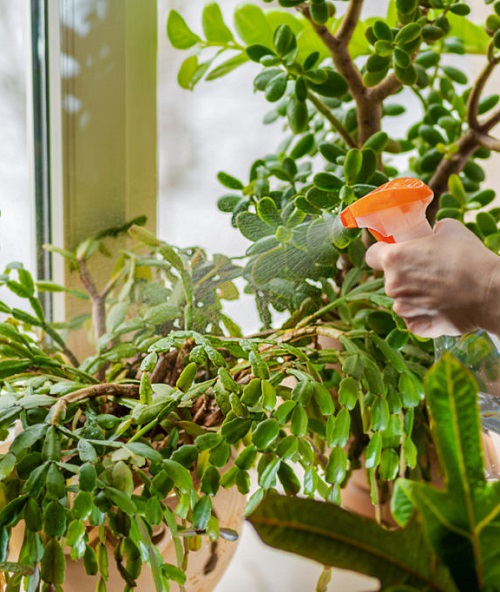
Right around late winter or early spring, you should wait for signs of new growth (small, bright green, pointed segments emerging at the tips of the stems) on your Christmas cactus. In most places, this starts to happen from mid to late February.
At this point, start fertilizing your plants with a balanced liquid fertilizer diluted to 1/4 of its recommended strength by the manufacturer.
From then on, feed the plant once every 4 weeks for healthy foliage growth. Some people even do it more frequently in summer, 1/6 strength every 10 days! Simple, right? You can also try these potent fertilizers for your Christmas cactus!
6. Do Not Toss Your Plants, Repot

If you are a beginner, you may think of tossing out your plants because you are confused about whether Christmas cacti will rebloom. The answer is yes!
Not only can they live for an average of about 30 to 40 years, but they will also bloom yearly if you meet all their care requirements and provide the right conditions for flowering. So, after the blooming time, nurture your plants, and definitely don’t discard them!
February is a good time to repot your Christmas cactus, but only if it’s root-bound. Don’t repot just because you think you should.
Signs a Christmas cactus needs repotting include roots growing out of the drainage holes, water running straight through the pot without being absorbed, or the plant getting thirstier quickly or becoming unstable and tipping over easily.
If you do repot, choose a pot only slightly larger than the current one (1-2 inches larger in diameter) and use a well-draining potting mix designed for cacti or succulents. Avoid repotting immediately after pruning, propagating, or buying.
Many people don’t realize that Christmas cacti prefer to be slightly root-bound, so over-potting is a common mistake.
Now that you know all the things you need to do to your Christmas cactus in February, it’s time to put them to practical use.


